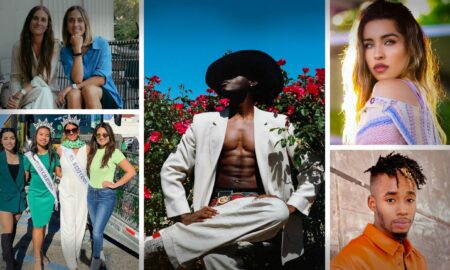

Today we’d like to introduce you to Elizabeth Huston.
Elizabeth, we’d love to hear your story and how you got to where you are today both personally and as an artist.
I grew up in a musical family, and always knew I wanted to be a musician, but never really knew what shape that would take. Going through college, I was fed the story that all musicians get, that you either become an orchestral performer or you’re unsuccessful. I knew I was interested in contemporary compositions but wasn’t sure how that fit into the model I had seen of what it meant to be a professional musician. When I moved to Philadelphia for graduate school, I happened to meet a contemporary and experimental arts enthusiast who exposed me to the Philadelphia Fringe Festival, a sizable festival of DIY experimental art that takes over Philadelphia every September. I couldn’t believe the quality of work that people were self-producing and decided that production was going to be my new direction.
We’d love to hear more about your art. What do you do you do and why and what do you hope others will take away from your work?
I create immersive performances of contemporary music with many entry points for different viewers. I personally love contemporary music, but throughout my career, I have often met people who don’t understand it or simply see it as noise. I feel it is one of the most misunderstood and underappreciated art forms, and I began thinking about why that might be. I decided that it’s potentially due to lack of exposure. People are getting a lot of visual media on a daily basis, especially through social media. There is a lot of very unusual and thought-provoking visual art being shared online, but it’s often accompanied by a soundtrack of either popular or old music; the audio is almost never anything experimental or unusual. Therefore, I decided I need to work visual cues into contemporary music so people can feel comfortably stimulated while simultaneously challenged.
The other issue is a lack of music education in schools. Kids are given a very basic musical background with the option of exploring it further, but many leave high school with no knowledge of how music is created. I also use interactive educational elements that can help people access the meaning of the work. For example, I did a performance of all of Berio’s Sequenzas, 14 unique solo pieces for 14 different instruments which were composed between 1958 and 2002. I put each performer in their own space, which was decorated like a bedroom with nostalgia items from the year that piece was composed. That way people immediately could grasp what part of Berio’s life this was coming from. I also put letters he wrote about the piece around the space and decorated with items that reflected particular influences. For example, the Violin Sequenza is based on pendulum motion, so we hung records released on the year that piece was written and had them swinging back and forth while it was being played. Sometimes we also just have academic resources for those interested.
What I want people to take away is whatever the composer wants them to access. I see my role as a loudspeaker for their message, making sure everyone can find it no matter their level of experience or education. Another composer I’ve worked with, Andrea Clearfield, has synesthesia and writes music based on colors. It’s difficult for her to share this with others, however, since most people won’t see color with sound. We created a computer program that will project the appropriate colors in shapes that move and change based on the sound input so everyone can see what’s in her head.
Artists face many challenges, but what do you feel is the most pressing among them?
I think the biggest challenge artists face is definitely funding. In many countries, artists are given a stipend and much more governmental support. I spend the vast majority of my time grant writing, rather than improving my art. Often times, government grants take 80 or more hours to write and then provide $2,000 or less. It essentially would be better just to fund your art through an office job! One thing I wish people would understand is the cost of making art versus the income. For example, my last show cost $125,000 to produce, and tickets were being sold for $40. That means 3,125 people would have to pay full price for me to break even and not pay myself anything for two years of work.
Do you have any events or exhibitions coming up? Where would one go to see more of your work? How can people support you and your artwork?
I create performances all over, but you can keep up to date by following my facebook page A Change of Harp, or checking out my website www.elizabethharpist.com.
I accept tax deductible donations through my fiscal sponsor, Fractured Atlas: https://www.fracturedatlas.org/site/fiscal/profile?id=12014
I’ll be bringing my production of Stockhausen’s KLANG to Montreal February 28th and March 1st for the New Music Festival.
Contact Info:
- Website: www.elizabethharpist.com
- Email: ehharpist@gmail.com
- Facebook: https://www.facebook.com/ContemporaryHarpist/




 Image Credit:
Image Credit:
Kevin Watkins, Ben Tran
Getting in touch: VoyageLA is built on recommendations from the community; it’s how we uncover hidden gems, so if you know someone who deserves recognition please let us know here.



















